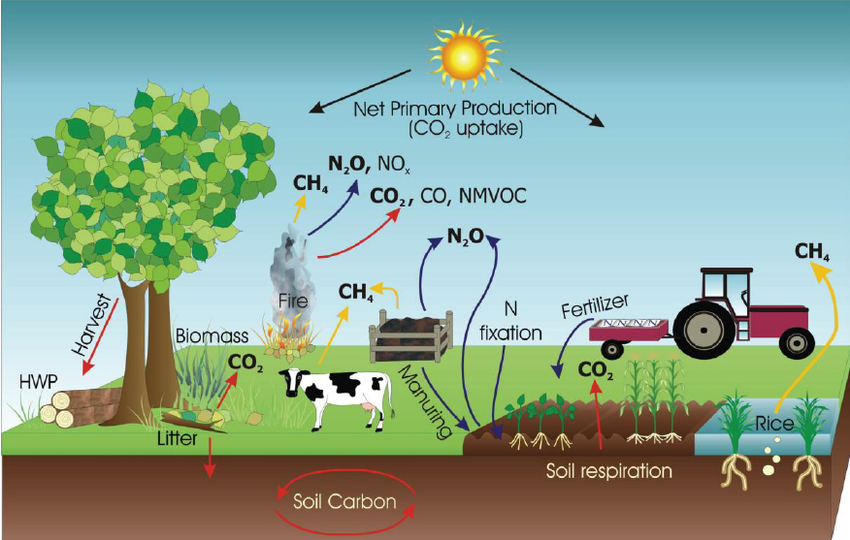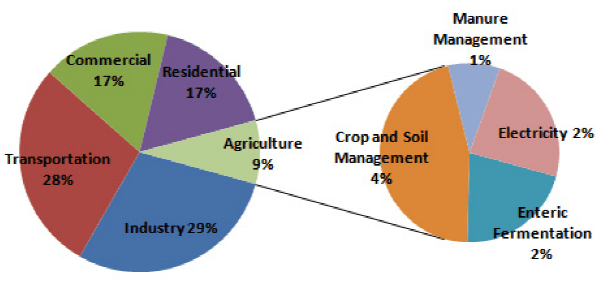Climate Change Minister Distanced Himself From Proposals Made on Agricultural Emissions

Climate Change Minister James Shaw has distanced himself from proposals made by an official working group on agricultural emissions.
The group – a partnership between government officials and industry – has put forward two options that largely rely on spending money to reduce emissions, both through new technology and incentives for farmers.
But Shaw says a serious price signal is the best tool the Government has to reduce emissions.
The price signal suggested in both of the proposals from the group is projected to only result in a less than 1 per cent reduction in emissions by 2030.
The two options put out for consultation on Monday are a levy for individual farms and a levy for the processors who buy their products.
The processor levy is far simpler and cheaper to administer but does less to recognise what individual farms do to mitigate emissions themselves.
The two options come from the He Waka Eke Noa partnership, a working group made up of Government officials and industry groups.
The group was formed in 2019 after Labour and the Greens reneged on an election promise to price agricultural emissions, allowing New Zealand’s highest emitting sector to continue to pollute freely, while other industries pay through the Emissions Trading Scheme (ETS).
Instead the working group was set up, with the option of putting agriculture into the ETS at 2025 held as a “back up” – with an option to put it in earlier in 2023 if the Government didn’t think significant enough process was being made.
Shaw expressed disappointment at an earlier series of options put forward by the group, saying “more work” was needed and the price signal had to be large enough to actually effect change.
In a statement released to Stuff on Monday Shaw said he was encouraged by the work of the group but the price signal had to be a “driver of change”.
“The latest discussion document includes new modelling that suggests a more ambitious level of emissions reductions than we saw last year. That’s primarily down to some new assumptions around encouraging further reductions through revenue recycling and reward payments,” Shaw said.
“While I support this development, it’s important to note that the pricing mechanism itself must be a significant driver of change. Pricing isn’t the only tool in the toolbox, but it remains the best way to reduce emissions directly – and that’s name of the game.”
Programme director Kelly Forster said the options were based on using revenue from prices to reduce emissions, not just the price itself.
“Paying a price isn’t the only thing that would encourage farmers to reduce emissions,” Forster said.
Forster said the distinction between the price itself and what the revenue was used for an “arbitrary distinction” as the proposals had to be looked at as complete packages.
“It’s the combination of a price and an additional incentive for tech uptake,” Forster said.

The farm levy
The farm levy would see each farm pay a specific levy calculated on its specific data. Different rates would be applied for methane and C02, recognising that methane’s short-lived nature means it doesn’t have to go all the way to zero.
It would reward on-farm actions that reduce emissions not currently recognised under the ETS like riparian planting, which could be used to offset the cost of the levy.
The advantages of this scheme was that individual farms would have their work to combat emissions recognised more readily, but this came at a much higher administrative cost – between $80m and $96m every year.
Much of that would be made up of the time farmers would have to spend reporting their emissions instead of farming, estimated at between $1200 and $1600 per farm.
The direct price of the levy is based on the ETS and a 95 per cent discount the Government has indicated farmers would start with, if they were to enter the ETS. At 2030 with the farm level levy this would come out 0.35c a kilogram of methane, or between 0.12c and 0.15c on each kg of milk solids on a dairy farm.
This is estimated to reduce average farm profits by between 5.5-5.7 per cent for dairy farms and 6-6.1 per cent for sheep and beef.
The cost itself is not estimated to reduce emissions by a large amount, but the revenue raised – $71m in 2025 rising to $339m a year in 2030 – is expected to contribute enough to new research and incentives that methane is reduced by 4.3 per cent every year by 2030.
This, combined with the effect of existing policies such as the National Policy Statement on Freshwater and the impact of the ETS making forestry more profitable than farming in some areas, is expected to reduce methane by 10.4 per cent – just meeting the Government’s target for 2030.
A paper produced by think tank Sustainable Economics suggested there was a risk that the farm level levy would lead to “significant” reductions in farm output and to possible “emissions leakage” – where reduced emissions in New Zealand are wiped out by increased emissions somewhere else.
The processor levy
The processor levy would see the processors who bought the products from farms pay a levy instead of the farms themselves.
It would be based on the quantity of product received by farms and fertiliser sold to them. The group expects the costs of these levies would be passed on to farmers.
In general, this would not recognise individual farms for their work to combat emissions, but specific “Emission Management Contracts” could be set up so that farms working to mitigate emissions could pay less of the levy.

 Previous Post
Previous Post Next Post
Next Post